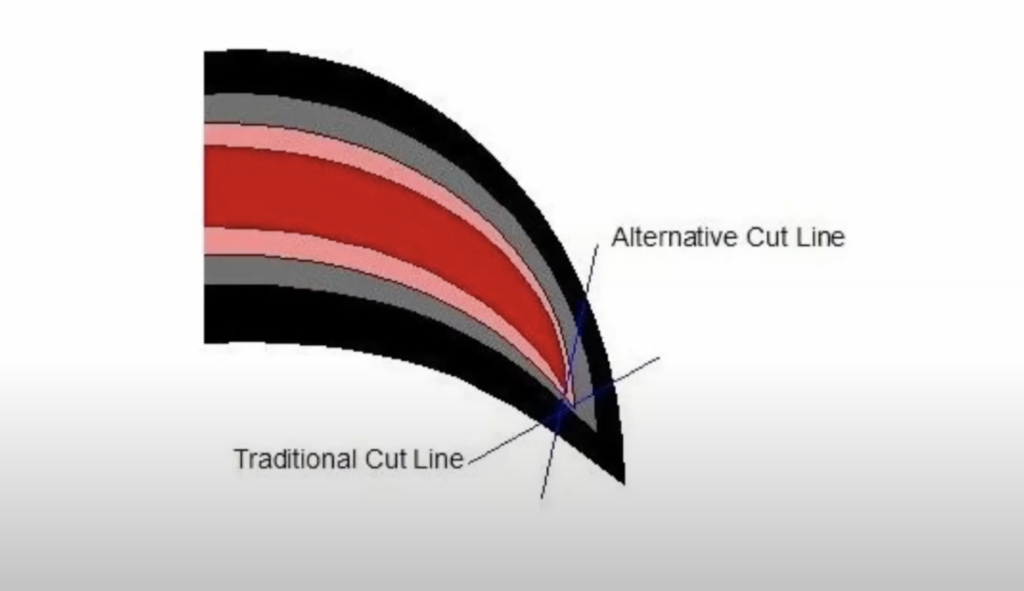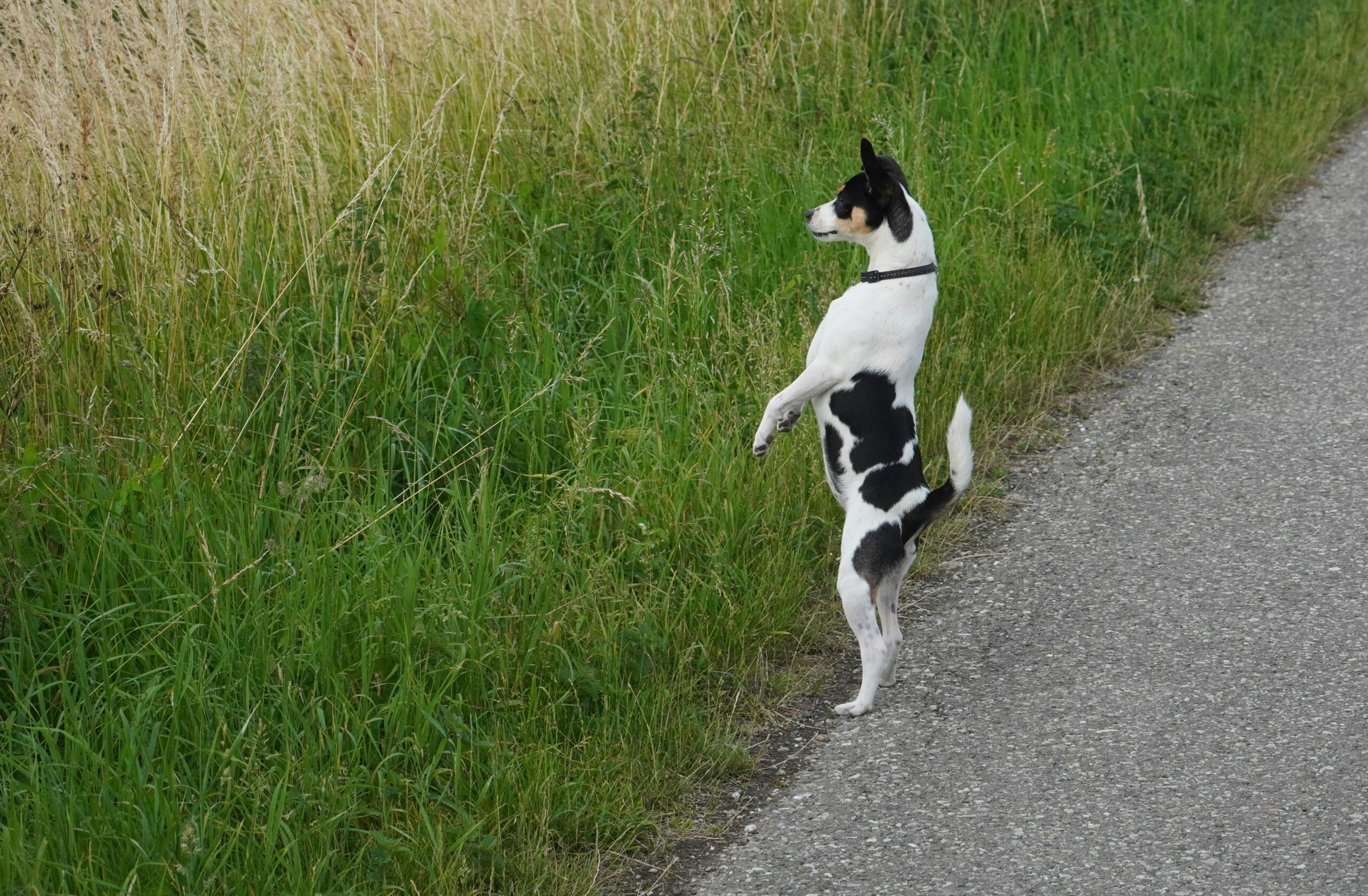It’s not easy to find the quick of your dog’s nails, especially when they’re black. But it IS important to keep at it to keep their nails nice and short; not only will having short nails prevent posture and joint issues as they get older, but it also helps with grip and anti-slipping if they already have leg weaknesses from arthritis or degenerative myelopathy (DM).
If your dog has not had his nails cut starting at a young age, just touching his paw or the sound of a dremel may be cause for stress and potentially aggression. But don’t worry, it is possible with time and patience to coax him into enjoying the process (as long as you don’t cut his quick!). Below is everything you need to know to trim black dog nails successfully.
What you’ll need
Good clippers – when they’re nice and sharp, it should feel like cutting through butter. Amongst the ones people have used, the red handled Miller Forge clippers are always recommended for sharpness.
Stypic powder (or just corn starch or flour will do) in case you do cut the quick and cause bleeding. Dab a bit of this onto the cut to stop the bleeding and consider wrapping it up with something to prevent infection.
High Quality Dremel that has power range of 5000 – 20,000 RPM (generally not pet dremels). You’ll be using 5000 – 12,000 RPM but you want a quality dremel that vibrates less and makes less noise.
or Human Nail File (just takes longer)
Lots of treats – the kind they’ll go crazy for, some you can dispense easily and in tiny amounts
Anatomy of a black nail
You need to understand the anatomy of a dog nail, so you know when to stop, but also where to trim to — if you never cut close to the quick, it will never recede and the overall length of the nail will never shorten.

You want to dry out the live tissue (pink in the image above) while not cutting the blood supply, ie. quick. You can do that by cutting off and filing down the outer shell and chalky dead layer.
Here’s a photo where you can clearly see the pink part that’s a bit like a heart, surrounded by the white chalky layer, with the black outer shell around that.

Counter Conditioning for dogs who don’t like their nails trimmed
This may very well be a long process that takes months to a year, but trust me, it’s worth it! What counter conditioning does is it associates something negative with something positive instead; we’re teaching the dog that something they fear (having their paw touched, for example) is instead something to look forward to (a treat).
Read the step by step instructions here for how to do this. Depending on what your dog currently tolerates, you may be starting from just simply having the clippers out. But eventually you will get to the point where you can hold your dog’s paw and clip a nail.
Don’t rush, take your time and proceed only when the dog is ready. See it as a game and time for you and your dog to bond. There is plenty of time to actually cut the nails once your dog is comfortable and allows you to do so! So take it slow to earn that trust.
Where to concentrate your cutting and filing
Usually people cut at almost a 45 degree angle, but that’s actually quite risky as you might cut the quick. Instead, it’s much safer to trim along the alternative cut line (ACL) at 90 degrees, which means you remove more of the shell or “roof” while getting closer to the pink tissue. The roof is the quick’s protection; when you cut that down, it feels it needs to recede to protect itself, which is what we want.

When you feel like you’re getting close to the pink part, take out your file or dremel and file around it, almost like sharpening the tip of a pencil.
Stop when you see the pink tissue revealed; it can look soft and jelly-like compared to the surrounding nail.
Once I’ve gone all around and removed as much of the hard shell as I am confident in removing, I’m left with a tip: I like to take a human nail file and gently file on the traditional cut line; if it’s dead tissue, it will come off easily, and I’m going slow enough that my dog will flinch if I’m touching live tissue (which is where I should stop).

How short is too short?
Generally you want to cut the nails so that they do not click or make sounds as the dog walks on a hard floor. Nails do have a function in the dog’s wellbeing, so be careful not to make them too short either.
How often should I trim?
If you’re working to shorten the nail, you should cut and file every 2-3 days. But if you’re just maintaining a nail length, then once a week is sufficient.
When all else fails
As dogs get older, they are probably walking less too, which means you will have to play a more active role in keeping their nails filed down. If you’ve tried the above methods to no avail, you may have to take your dog for a professional trim at the vet’s office, under anesthesia — this way at least you’ll get the length down quickly, and hopefully you can maintain that length with frequent walks or filing by hand.
Another thing that has worked for many is using a homemade scratch board, consisting of a wooden board with a piece of 120 or 80 grit sandpaper stuck to it. You can train your dog to scratch it in exchange for treats, so it becomes a fun activity!
How to trim black dog nails: Conclusion
Keeping nails at a healthy length is important for dogs of all ages, but can be more difficult for an older dog who has not had that training. The good news is, old dogs can learn new tricks! With patience, you can help you dog maintain short nails that will make his life much more enjoyable.
Disclaimer: The above post contains affiliate links to products that have been deemed helpful by myself or others in the dog parenting community. As an Amazon Associate I earn from qualifying purchases resulting from these links, to help me support this blog.
The Ultimate Guide to Buying a Couch Ramp for Dogs
Is your senior dog struggling to climb onto the couch now that his back legs are weaker than before?…
Exercises for Elderly Dogs with Weak Back Legs
These exercises will help get your dog moving better by introducing the basics of joint movement, ba…
How to Trim Black Dog Nails on Senior Pups
It’s not easy to find the quick of your dog’s nails, especially when they’re black…

About the Author
Tina C
Founder of The WOOF Line, Tina cared for her rescue dogs Jen and Flapper to the ripe ages of 16 and 18, respectively. Dogged persistence led her to corners of the internet where fellow senior pet owners congregate, revealing troves of valuable experience and advice. Tina hopes that by gathering this information, pet parents will better understand the options available to them, and find solutions to thrive with their furry friends for years to come. Read our story here.



Leave a Reply